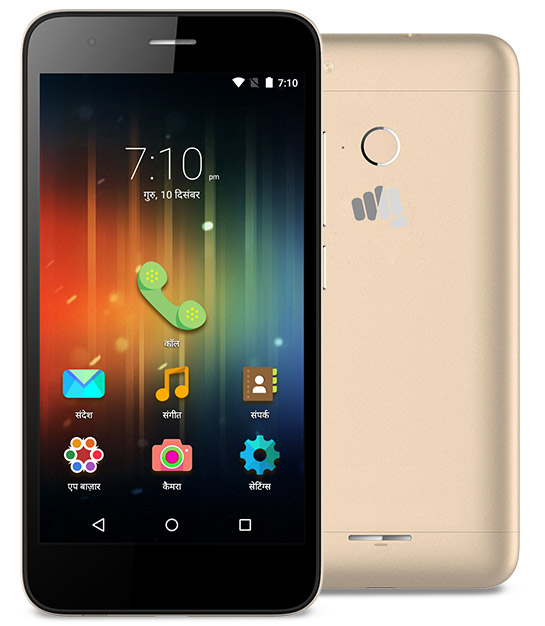Micromax Unite 4 and Unite 4 Pro with Indus OS 2.0 Unveiled
by June 28, 2016 2,745 views0
 Micromax has unveiled two budget phones to its Unite series of smartphones. The Micromax Unite 4 and Unite 4 Pro are finally here. Let’s take a look at the specifications on these phones.
Micromax has unveiled two budget phones to its Unite series of smartphones. The Micromax Unite 4 and Unite 4 Pro are finally here. Let’s take a look at the specifications on these phones.
Specifications – Micromax Unite 4
The Micromax Unite 4 will come with a 5 inch IPS display that has a screen resolution of 720 x 1280 pixels. The phone comes with a 1 GHz Quad Core MediaTek MT6735P processor alongside a 1 GB RAM. That combination will make this phone a decent performer in its price segment.
The internal storage on the Unite 4 is 8 GB. It can be expanded up to 64 GB. However, this may not be the best internal storage option available in the market today as consumers can find multiple smartphones in the same price segment with 16 GB of internal storage capacity to start with. Now some folks can argue that if the capacity can be expanded it is not really an issue.
More from iSpyPrice: Check out the detailed specifications on the Micromax Unite 4 mobile
If you think about it, a consumer buying a budget phone is really buying it because he or she is budget conscious and wants as many features as they can possible get in the said budget. So if your competition is shipping phones with better storage without the consumer having to invest in a microSD card then you ought to offer the consumer what they expect. Also, pretty much the standard internal storage capacity on most smartphones these days other then the entry-level products is 16 GB.
The phone comes with an 8 megapixel primary camera which supports LED flash and auto focus. The secondary camera is a 5 megapixel unit. This is a dual-SIM phone and it supports 4G connectivity. We are glad to see Micromax back to launching 4G phones after a brief hiatus. The battery capacity on this phone is 2500 mAh, which is not bad at all for a phone priced Rs. 6,999.
Micromax Unite 4 Pro
The Unite 4 Pro is a interestingly different to the Unite 4 in that a lot of the specifications are still the same but those that differ are worth making note of.
The Unite 4 Pro has the same 5 inch IPS display as the Unite 4 but it has a different processor. The processor on this phone is a 1.3 GHz Quad Core Spreadtrum (SC9832) processor. The Unite 4 Pro boasts of a 2 GB RAM. It is dual-SIM, supports 4G, and has the same camera specifications as its cousin. However, the Unite 4 Pro has a – surprise surprise – 16 GB internal storage capacity, which can be expanded up to 32 GB (another surprise). This is a weird dichotomy.
The Unite 4 Pro is priced at Rs. 7,499, which means it is priced just Rs. 500 more than the Unite 4. So you get a better internal storage for Rs. 500 extra but you can expand the storage capacity on the pricier phone only half as much as you could expand the storage capacity on the phone that costs less. That doesn’t make great sense to me. I guess we will just have to trust that Micromax knows what they were doing here.
More from iSpyPrice: Check out the detailed specifications on the Micromax Unite 4 Pro mobile
It gets more interesting. The Unite 4 Pro comes with a 3900 mAh battery. That is not a slightly better battery that is a much better battery than the Unite 4. So let me get this straight. Micromax is actually offering twice the RAM, weird storage capacity options, and a much better battery on the Unite 4 Pro for an extra price of Rs. 500. That’s almost like telling the consumers not to buy the Unite 4. I think Micromax either knows very well what they are trying to do with the pricing of these phones or they just didn’t put too much thought into this one.
Not everything is weird about these two phones though. With these phones Micromax is targeting consumers who would prefer to use phones in their native languages, if given the option. These are two of the first devices to use the new Indus OS 2.0 which has support for 12 regional languages. This is of course based on Android. The Unite 4 is powered by Android 6.0 Marshmallow and the Unite 4 Pro is powered by Android 5.1 Lollipop upgradable to Marshmallow but the user interface is essentially the Indus OS 2.0.





